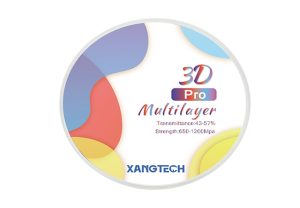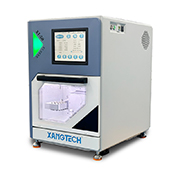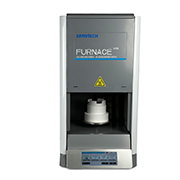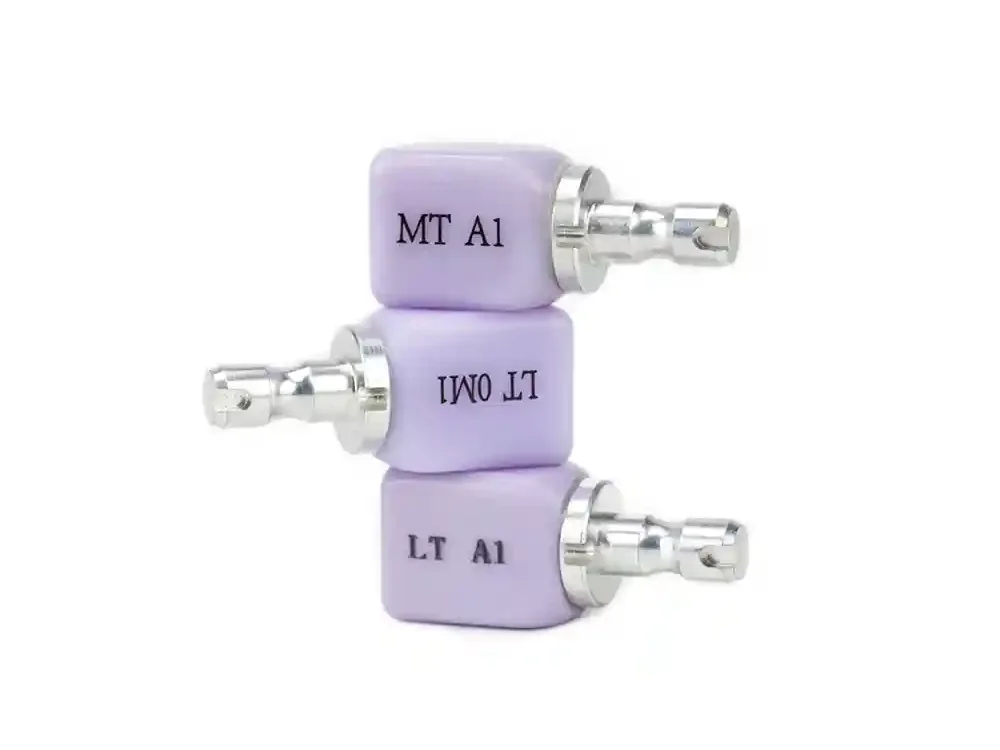Exploring the Basics of Dental Materials
Composition and Structure of Lithium Disilicate
Chemical Properties
Lithium disilicate is a tooth-colored glass-ceramic consisting mainly of lithium, silicon dioxide, and other oxides. The chemical composition of the material allows fluorescence and maintains a proper balance of strength and translucency, giving it ideal properties for various dental applications. This also improves thermal expansion properties, which leads to better compatibility between cement and reduction. Its temperature-extension behavior is also improved due to the incorporation with lithium oxide, providing a better fit when bonded with dental cements.
Physical Characteristics
Owing to its glassy matrix, lithium disilicate shows good optical properties. This material offers a high level of translucency, which helps to imitate natural teeth. It is also a well-known microstructure, which helps provide mechanical strength and chipping resistance to the material. The high microstructure of this material is likewise identifiable in that there, therefore, creates the mechanical strength of the material; chipping resistance, and etc.
Composition and Structure of Zirconia
Chemical Properties
Zirconia (or zirconium dioxide) is a crystalline oxide of zirconium. It is chemically stable, has a high melting point, and is resistant to the corrosive and degrading effects of the oral environment. Yttria stabilization results in outstanding toughness and structural stability of zirconia. Yttria stabilized zirconia provides toughness and structural stability
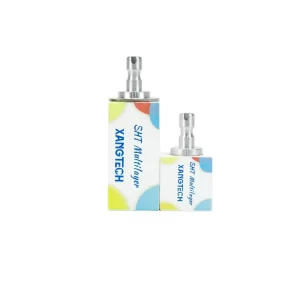
Physical Characteristics
Zirconia is renowned for its exceptional hardness and opacity. Unlike lithium disilicate, it lacks translucency but compensates with superior strength. Its dense crystalline structure contributes to its durability under high masticatory forces.
Comparative Analysis of Mechanical Properties
| Property | Lithium Disilicate | Zirconia |
| Flexural Strength | Moderate | High |
| Fracture Toughness | Moderate | Very High |
| Surface Wear | Low | Very Low |
| Lifespan in Oral Environment | Long | Very Long |
Strength and Durability
Flexural Strength
Lithium disilicate offers moderate flexural strength suitable for anterior restorations where aesthetics are prioritized. In contrast, zirconia provides high flexural strength, ideal for posterior restorations subjected to significant occlusal forces.
Fracture Toughness
Lithium disilicate has moderate fracture toughness which is suitable for low to moderate stress clinical applications, whilst zirconia has very high fracture toughness guaranteeing functional reliability in demanding clinical situations. Whereas lithium disilicate has moderate fracture toughness sufficient for simpler applications, zirconia has very high fracture toughness providing confidence for use in more difficult clinical situations.
Wear Resistance and Longevity
Surface Wear
Lithium disilicate experiences low surface wear due to its smooth microstructure but can be prone to surface damage under excessive force. Zirconia’s very low wear rate ensures longevity even under constant stress.
Lifespan in Oral Environment
Both materials offer impressive lifespans; however, zirconia’s robust nature grants it an edge in durability over time, maintaining integrity even under adverse conditions.
Aesthetic Considerations in Dental Restorations
Translucency and Color Matching
Natural Appearance
The translucency of lithium disilicate allows it to mimic the natural enamel closely, offering superior aesthetic results compared to zirconia’s more opaque nature.
Customization Options
Lithium disilicate provides extensive customization options through layering techniques that enhance esthetic outcomes. Zirconia can be customized as well but often requires additional veneering for optimal aesthetics.
Surface Finish and Texture
Polishing Techniques
It is also well known for its excellent finish after the final polishing step. A smooth surface finish is achieved, in a manner consistent with the translucent nature of lithium disilicate. As a result of flakes out of it being tough, zirconia is a lot harder to polish but a decent polish causes a high mirrored surface. Zirconia is very hard, hence requires special polish and gives high luster finish when done correctly.
Impact on Aesthetics
Thanks to the high polish that can be achieved with lithium disilicate, light can travel through the material much as it would in natural dentin. Although zirconia has that polish touch this makes a difference in aesthetics with the high-gloss surface, a comparable aesthetic appearance can come at the price of an additional cosmetic treatment such as glazing or veneering. The polish of zirconia affects aesthetic by improving luster but there may be need for other aesthetic treatment such as glazing and veneering in order to achieve a similar aesthetic as compared to other common materials.
Clinical Applications and Suitability
Indications for Lithium Disilicate Use
Common Procedures
Lithium disilicate is commonly used in aesthetic-demanding dental procedures. Because of its translucency, it is perfect for anterior crowns, veneers and inlays/onlays. Further, the material is so well-matched to natural dentition that restorations are nearly indistinguishable from adjacent teeth. The material’s property of being blended with natural tooth allows the restoration to be making it disguise with the adjacent dentition.
Patient Suitability
Patients who are looking for aesthetic and moderate mechanical demands restorations are the best candidates for lithium disilicate. This is especially beneficial for those who are focused on aesthetic results in the front of the mouth. But it has a moderate fracture toughness, and it is better not to recommend it for patients with heavy occlusal forces or bruxism.
Indications for Zirconia Use
Common Procedures
Zirconia is primarily indicated for high-strength applications. Good for posterior crowns, bridges and as implant abutments subject to high masticatory forces. Its strength has made it one of the more common materials used in full-arch restorations and cases with limited interocclusal distance. Due to its strength it is a material of choice in full-arch restorations and cases with compromised interocclusal space.
Patient Suitability
Zirconia offers the best mechanical properties for patients with high biting forces needing long-term restorations. It is perfect in posterior and anterior sites where aesthetics can be improved with further veneering procedures and for patients who require durable solutions. Ideal for those who need strength in the posterior and anterior when aesthetics can be addressed with additional veneer modalities.
Cost Implications and Economic Considerations
Initial Investment and Material Costs
The initial cost of lithium disilicate restorations tends to be lower than zirconia due to its less complex manufacturing process. However, zirconia’s higher material costs reflect its advanced technological composition and superior strength characteristics.
Long-Term Value and Maintenance
Though the initial investment in zirconia could be higher, long-term value often surpasses initial costs via lower maintenance needs and incredible durability level. In the long run, this material needs more replacements or repairs which reduces its entire cost effectiveness. Over time, lithium disilicate may need to be repaired or replaced more often, which affects its long-term economic cost–benefit ratio.
Innovations in Dental Material Technology: XANGTECH Solutions
Introduction to XANGTECH’s Product Line
XANGTECH is at the forefront of dental material innovation, offering a comprehensive range of products designed to meet diverse clinical needs. Their product line includes advanced solutions for both lithium disilicate and zirconia applications.
Features of XANGTECH’s Dental Zirconia Block
Strong but precisely engineered dental zirconia block from XANGTECH This is made from advanced technology with uniformity in microstructure, to improve durability and the ability to aesthetic. Resilient and aesthetically versatile, it is manufactured through advanced technology that maintains micro structural consistency.
Benefits of Choosing XANGTECH Products
Here are some reasons why you better stick to XANGTECH products, the first a lot more benefits wherever you get advanced elements in every way of authority and consistency. Their commitment to innovation allows dental practitioners to provide the best result for a given patient need in an economically sustainable manner. By remaining at the forefront of innovation, dental professionals can continue to achieve the best results for each patient and do so in a cost-effective manner well into the future.

